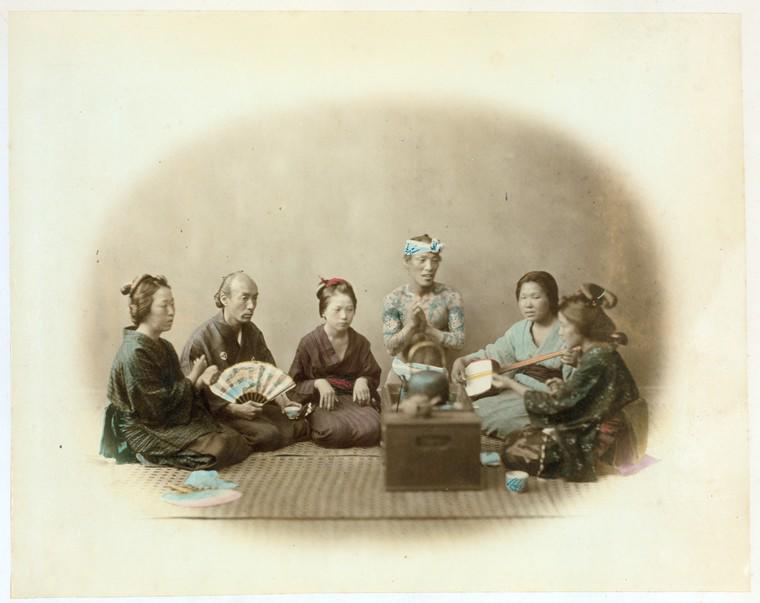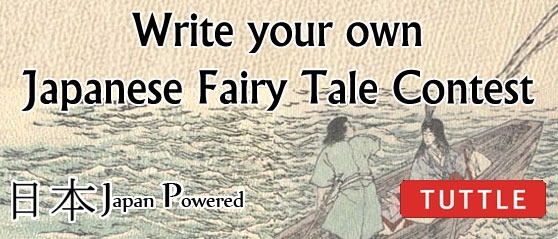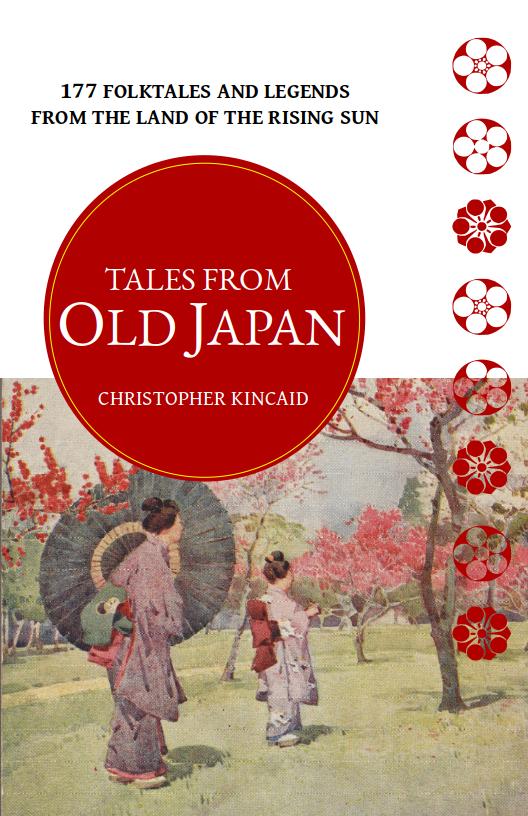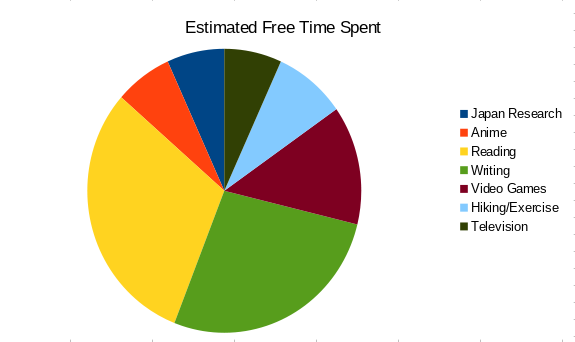Hard but hardly useful?
As a master student of Japanese Studies, I am obliged to concern myself not only with modern popular culture and anime but also with the subject of Premodern Japanese. To be precise, I’m learning to read texts from the Edo period and older which use bungo, or premodern grammar. I’m also doing ‘Kanbun’, which is basically a Japanese trick of reading ancient Chinese using said grammar. It’s quite cool to think about all the yōkai legends I’ll be able to read once I’ve mastered bungo, and to realize I have just understood a story written in China in 200 BC (!) – but the practical, everyday applicability of Premodern Japanese does seem rather limited. However, I wouldn’t be writing this if I hadn’t found
A back door.
Pop-cultural products – anime, manga, and video games – do actually use premodern Japanese, here and now. In many cases, admittedly, the use only barely qualifies as ‘premodern’, and it is mostly done to give the show a bit of an “ancient” feel. In this way, it is similar to the drawing style of historical anime which sometimes evokes murals, picture scrolls, or woodblock prints. An interesting example, in both aspects, is the 2010 anime Katanagatari, which is set in a parallel universe’s version of feudal Japan. In the opening narration, a text appears in wild brushstrokes, which uses the premodern negation auxiliary ‘nu’ instead of modern ‘nai’. 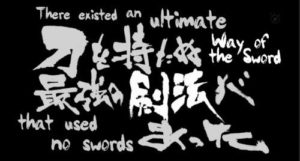
Gods and Monsters and the Prayer of Purification
Then I watched another episode of Noragami Aragoto (2015), the second season of the Noragami anime which continues the story of a hardly known Japanese deity, Yato, his sword-which-is-actually-a-dead-soul Yukine, and their friend Hiyori. They vanquish monsters and try to evade the battle goddess Bishamon-ten, who holds a grudge against Yato. 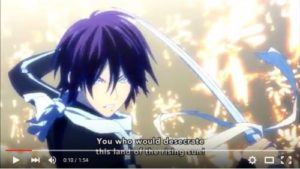
Now, as Yato was making the little speech he always delivers before slaying a monster, to my infinite delight, I made out the premodern auxiliary ‘mu’, one of the functions of which is to signify intention.[i]
Both the language style and the repetition of the speech before every showdown give these monster extermination sequences an aura of ritual. And premodern language patterns tend to survive in the formulaic speech of rituals, as Western Christians may have experiences themselves – think of the Catholic Lord’s Prayer, which still uses the second person singular pronoun ‘thou’ and corresponding verb inflection.
It may be a bit of a stretch, but I wonder if Noragami isn’t referencing norito prayers here. Norito are the ancient prayers of Shinto, the Japanese indigenous religion, and one of the oldest forms of Japanese preserved.[ii] Since the main characters of Noragami are Shinto gods and their regalia, it wouldn’t be surprising if the makers had taken some inspiration from the actual Shinto prayer of purification when they devised the little speech Yato makes before purifying (i.e. slaying) monsters. A strong hint for this is the word Yato uses for Japan, Toyoashihara-no-nakatsu-kuni (something along the lines of “The Country Amidst the Plains of Plentiful Reeds”). The term is based on Shinto legend; it is one of the names given to Japan in the Shinto creation myth, if I am not mistaken. (This should be verifiable in the English translation of the Kojiki (A Record of Ancient Things), Japan’s oldest chronicle, but I am still unable to get my hands on a copy.) The term used for Heaven in the series, Takamagahara, originates from the same mythology. Finally, Yato also uses the same words for spiritual pollution (kegare) and cleansing (harau) as the prayers do. There are even a number of Kanji visible in the background during the sequence, but never long or clear enough to actually recognize them. I wonder if they are taken from a religious text?
In addition, Yato himself has definitely seen the Edo era (based on the clothes and buildings seen in his flashbacks), and would be able, perhaps even likely, to fall back to premodern speech patterns when under stress or in a repetitive situation – no matter how contemporary (and jerk-like) he usually acts.
The common suspects and the odd one out
I asked around for suggestions of other anime with potential use of bungo, and among those recommended were a few I had actually seen already, just without realizing – Ayakashi and Mononoke (2006/2007), Mushishi (2005-6), and Hōzuki no Reitetsu (2014), for instance. The first three can all be placed the context of historical (horror) fiction and/or monster-fighting fantasy; thus I assume the use of bungo can be attributed to the feel of magical/religious ritual and historical flavour I described above. I have also looked at two series I hadn’t come across before, Shōnen Onmyōji (2006-7, about the grandson of the famous Feng Shui magician Abe no Seimei) and Otogi Zōshi (2004-5, another dark historic fantasy which also features Seimei), and these also fit the bill. The aforementioned Hōzuki no Reitetsu is a bit of a special case, though. Set in present day, it portrays an unlikely oni (demon) named Hōzuki and his calm in the face of the daily struggles which come with his post as chief secretary of Enma Daiō – the King of (Buddhist) Hell.[iii]
Hōzuki is a very episodic and intensively intertextual comedy series which playfully joins Eastern (and a bit of Western) religion and folklore with a parody of modern trends and pop culture. Many of the jokes will go over your head if you don’t have some basic knowledge of Buddhism, Japanese folktales and literary classics. And modern Japanese pop culture. And koalas.
Well and sometimes, in the middle of all that, you’ll get some bit of bungo. For example, in episode 3, during a big sports tournament between the Chinese and the Japanese afterlives, the legendary beauty and poet Ono no Komachi pens a short waka poem for the title character. So basically, Hōzuki no Reitetsu opens up a third dimension of the use of bungo in anime: as an ironic citation in a postmodern (con/inter)text. And at this point, I’ll close my musings on the use of premodern Japanese in anime, at least for the time being.
Notes and References:
[i] See the beginning of this clip from episode 5 of the original series for reference.
[ii] For the following, I have mostly used this website and outgoing links.
[iii] The opening introduces the 272 Hells of Buddhism, but the only version on YT is in pretty bad quality, see here. For those interested in the matter, Matthew Meyer’s yōkai anthology The Hour of Meeting Evil Spirits includes a very interesting and intensely readable description of Hell (Jigoku).
